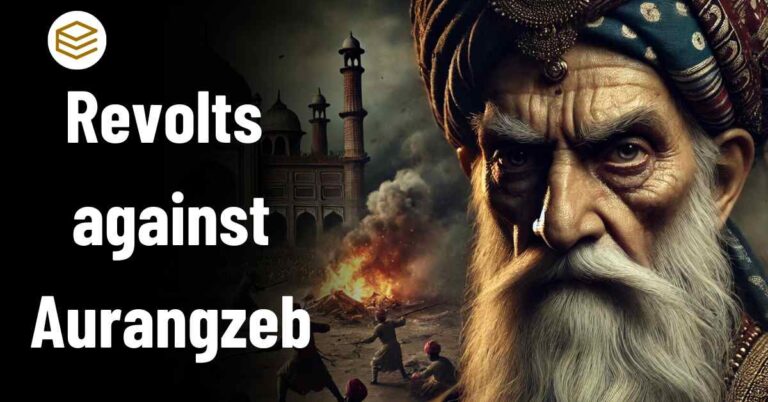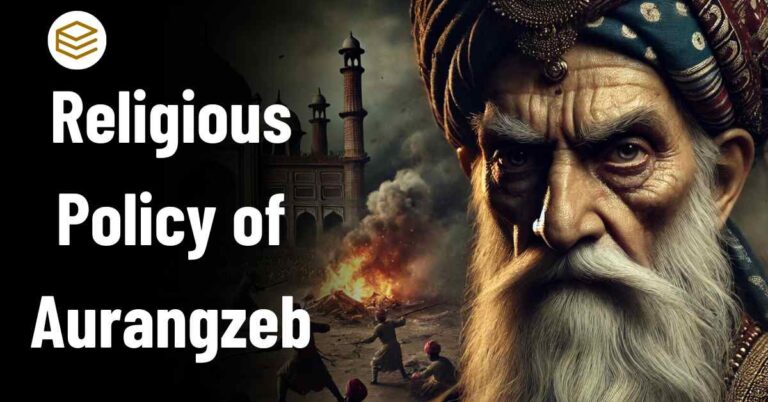December 7, 2025 3:43 am
Table of Contents

The Maurya period witnessed a steady expansion of trade with the western world and active exchanges of emissaries between the Maurya Empire and Hellenistic kings. Graeco-Roman accounts document interactions with kings like Sandrocottus (Chandragupta Maurya) and Amitrochates (Bindusara) and describe the capital city of Palimbothra (Pataliputra). One of the most valuable sources of information about ancient India during Chandragupta’s reign comes from Megasthenes’ Indika.
Indika is an account of India written by Megasthenes, who was sent as an ambassador by Seleucus Nikator, a Greek ruler of the neighboring region, to the court of Chandragupta Maurya. As a royal ambassador, Megasthenes’ exposure to Indian society was socially and geographically limited. Although the original text of Indika has been lost, its fragments have been preserved through later Greek and Roman writers such as Diodorus, Strabo, Arrian, Pliny, and Claudius Aelianus.
- Diodorus: A historian whose surviving works describe Alexander’s campaigns in India and include a general account of the region based on sources like Indika.
- Strabo: A geographer and historian who discusses India in his geographical works. His accounts draw heavily from Indika.
- Arrian: A statesman, soldier, philosopher, and historian who wrote about Alexander’s campaigns in Anabasis and used Megasthenes’ accounts in his continuation, also titled Indika.
- Pliny: Known for his work “Natural History,” Pliny also references observations from Megasthenes.
- Claudius Aelianus: A Roman scholar who also cited Megasthenes’ work.
The references to Megasthenes’ Indika are scattered across these sources, each of which had its interpretation of the original work. These texts, written primarily for a Greek audience, aimed not only to inform but also to entertain. Thus, later authors selected information that would captivate their audience, often emphasizing aspects of Indian society that were either similar to Greek society or particularly exotic and different.
Indika provides detailed descriptions of India’s geography, rivers, climate, flora, fauna, agriculture, animals, administration, and society. The Greek fascination with India’s wildlife is evident in their detailed descriptions of elephants, monkeys, horse training, and elephant hunting. Megasthenes also documented Indian religious practices, referring to Indian worship of Dionysus and Herakles, names the Greeks used for Indian deities like Vasudeva Krishna.
Pataliputra and its Importance
Megasthenes gave a detailed description of Pataliputra (Palimbothra), the Mauryan capital, which he considered the most important city in India. He describes it as a massive city surrounded by a deep ditch and a wooden wall crowned with 570 towers and 64 gates. The scale of Pataliputra was immense, measuring 9.33 miles long and 1.75 miles broad, dimensions that match the modern city of Patna. Megasthenes compared the splendor of Pataliputra with Persian sites like Susa.
Excavations in Pataliputra have confirmed some of the features described by Megasthenes, including the timber palisades and wooden houses.
Chandragupta Maurya’s Life
Megasthenes provides a detailed account of Chandragupta Maurya’s personal life and the grandeur of his palace. According to Megasthenes, Chandragupta led an extraordinarily splendid life, and his palace was unique in its beauty. One peculiar aspect was that Chandragupta never slept in the same room for two consecutive nights, likely for security reasons. Megasthenes observed that the king wielded unlimited power and kept himself fully informed about his empire through an extensive network of spies. Chandragupta was always available for consultation, a fact supported by references in the Arthashastra and Ashoka’s Rock Edict VI.
Administration Under Chandragupta
Megasthenes documented a detailed description of Chandragupta’s administration, particularly in Pataliputra. The city administration was organized into six committees, each consisting of five members responsible for different functions:
- Industrial arts
- Entertainment and surveillance of foreigners
- Maintaining records of births and deaths
- Trade and commerce
- Supervising the public sale of goods
- Collection of taxes on merchandise sold in the market
These committees played a vital role in maintaining the city’s functionality and ensuring smooth governance. The administration also extended to the military, where six committees of five members each were responsible for different aspects of the army:
- Navy
- Supervision of equipment and transport
- Infantry
- Cavalry
- Chariots
- Elephants
Though Megasthenes mentioned the navy, it is notably absent in both Arthashastra and Ashokan inscriptions.
Indian Society
Megasthenes provides insights into Indian society during Chandragupta’s reign. He describes Indians as a disciplined and frugal people who lived simply and honestly. Megasthenes remarked that the people had no written laws and did not know how to write, relying entirely on memory for their transactions. Theft was rare, and people led a generally happy and content life. He also observed that wine was rarely consumed, except during sacrifices, and the primary food was a type of rice porridge.
According to Megasthenes, marriage and occupations were hereditary in nature, which points to two important features of the caste system: hereditary occupation and endogamy (marrying within one’s group).
Although he remarked that slavery was unknown in Indian society, this is not corroborated by Indian sources like the Arthashastra. The Smritis and Hindu law books indicate that slavery did exist in ancient India, but it was generally mild compared to other civilizations. Most slaves were domestic, treated as family members, and slave trade was prohibited. Megasthenes’ claim about the absence of slavery may reflect his limited exposure to certain regions of India, particularly the North-West, where slavery might not have been as prevalent.
Indian Social Classes
Megasthenes divided Indian society into seven classes based on occupation:
- Philosophers (Sophists): Though few in number, they were held in the highest esteem.
- Farmers: They were the most numerous and considered public benefactors, protected from harm due to their essential role in food production.
- Shepherds and Hunters: Nomadic people who lived in tents and paid taxes from their animals.
- Artisans and Traders: Engaged in various public duties and paid taxes on their work, except for those who made weapons, who were paid by the state.
- Soldiers: Enjoyed great freedom and were fully maintained at the king’s expense.
- Overseers: They supervised everything in the country and reported to the king or authorities.
- Councillors and Assessors: This smallest but most respected class consisted of wise and esteemed individuals who advised the king and held high-ranking positions, such as generals and chief magistrates.
Criticism of Megasthenes’ Account
Though Megasthenes’ Indika is an invaluable source, it has been criticized for its limitations and inaccuracies:
- Restricted Exposure: Megasthenes’ access to Indian society was socially and geographically limited, so his account may not provide a comprehensive view of all regions and communities.
- Seven Classes: His classification of Indian society into seven groups does not align with the traditional varna or jati system, indicating that his understanding may have been incomplete.
- Idealized View of India: Megasthenes’ claim that farmers were never harmed during wars, there was no slavery, and theft was rare reflects an idealized and perhaps exaggerated portrayal of Indian society.
- Claudius Aelianus: Cited Megasthenes and claimed that Indians did not borrow or lend money with interest, a statement that does not align with other historical sources.
- Errors in Reporting: Other Greek writers like Strabo repeated errors from Indika, such as the claim that Indians were ignorant of writing and metalworking and only drank wine during sacrifices. Comparisons between India and regions like Egypt and Europe often led to further distortions, such as comparing the Ganga and Indus with the Nile and Danube.
- Fantastic Tales: Later writers omitted many of the fantastic stories found in Indika, but some still remain in accounts, such as:
- One-horned horses with deer-like heads.
- Huge snakes and rivers where nothing could float.
- Men with feet turned backward and eight toes on each foot.
- Dog-headed men.
- Gold-digging ants in the north-western mountains.
These fantastical descriptions show how Indika was filtered through a Greek perspective, exaggerating and idealizing aspects of India to fascinate their audiences. Thus, while Indika provides valuable insights into Mauryan society, it is important to view it critically and in context.
Comparison with the Arthashastra
A comparison between Megasthenes’ Indika and Kautilya’s Arthashastra reveals notable differences in their depictions of Indian society and administration. While both texts provide insights into the Mauryan Empire, they offer contrasting perspectives on key aspects such as:
- Fortifications: Both sources describe the fortified nature of cities like Pataliputra, but Arthashastra provides a more detailed and practical guide on how fortifications should be designed and maintained, while Megasthenes’ account is more descriptive.
- City and Army Administration: While Megasthenes mentions the administrative committees in Pataliputra, the Arthashastra offers a far more comprehensive account of the duties and responsibilities of officials at every level of government.
- Taxation: The Arthashastra provides a detailed framework for taxation and revenue collection, while Megasthenes gives a more generalized account of how taxes were levied in India.
Despite these differences, Megasthenes’ Indika remains a crucial source of information for understanding the Mauryan administration, even though it must be viewed critically and cross-referenced with other sources like the Arthashastra and Ashokan edicts.
Influence of Megasthenes’ Indika on Later Works
The fragments of Indika that survive today through authors like Diodorus, Strabo, Arrian, and Pliny reflect the fascination of the Greek and Roman world with India. These authors used Indika as a source of information about a land that was largely unknown to the Western world. Over time, however, the references to Indika became more detached from the reality of Mauryan India and more reflective of the Greek and Roman fascination with exotic and distant lands.
Megasthenes’ Indika represents an essential but incomplete and sometimes flawed view of ancient India, filtered through both his personal experiences and the interpretations of later Western writers.





[…] Megasthenes’ Indika […]